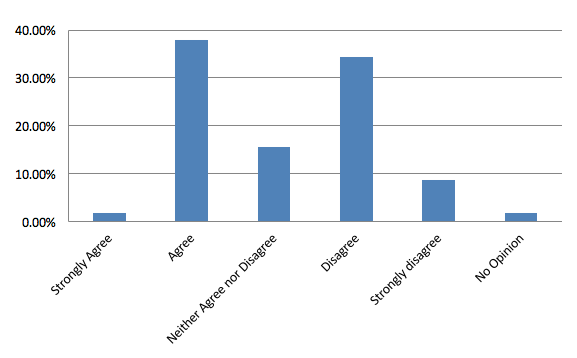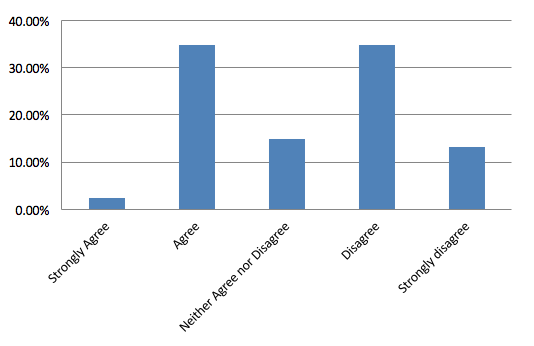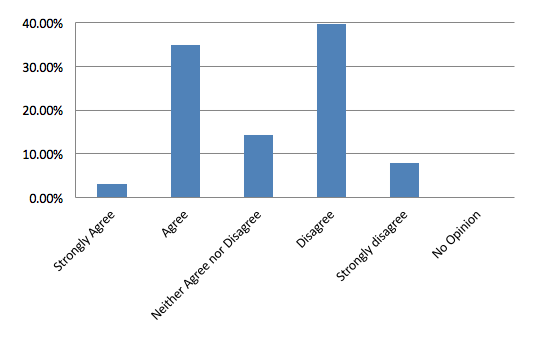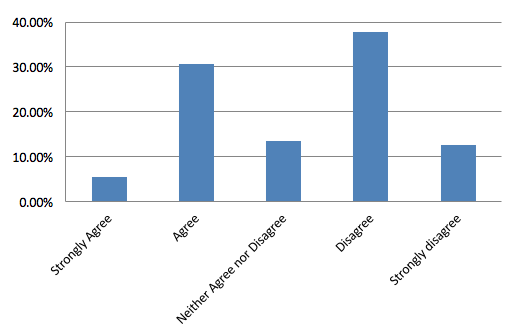The Easterlin paradox is the finding by Richard Easterlin (1974) that reported happiness was flat or falling between 1946 and 1970 despite sustained US economic growth over the period. Some have cast doubt on the idea that happiness is decoupled from economic growth – for example, Stevenson and Wolfers (2008) show that happiness typically grows with income, albeit more slowly. Nonetheless, there has been a growth in the study of the economics of happiness and wellbeing.
As research in this area has developed and expanded, there has been a growing chorus of voices arguing that happiness and wellbeing should be the focus of economic policy although this idea goes back to Jeremy Bentham’s ‘Maximum Happiness Principle’. Such a ‘wellbeing policy’ is defined by O’Donnell and Oswald (2017) as “any form of economic and social policymaking that uses people’s feelings of psychological wellbeing. More broadly, it represents national decision-making that draws upon data on citizens’ reported emotions.”
The latest Centre for Macroeconomics (CFM) and CEPR survey seeks to explore two important aspects of this idea:
- First, it discusses the important issue of measurement of wellbeing as compared with other, more conventional, statistics used in macroeconomic policy.
- Second, its turns to whether or not this new research literature should influence the objectives of macroeconomic policy.
Measurement of wellbeing and happiness
Much of the research on wellbeing and happiness uses measures of subjective wellbeing and life satisfaction scores. These scores tend to come from surveys in which respondents are asked to report the answer to a question such as this one in the Eurobarometer survey: “On the whole, how satisfied are you with the life you lead?”1
As the research literature has developed, official measures have also been developed. Famously, Jigme Singye Wangchuck, the fourth king of Bhutan, commented in the 1970s that “gross national happiness (GNH) is more important than gross national product”.2 Bhutan, albeit relatively recently, measures GNH quantitatively using nine sub-indices.
Similarly, since 2011, the Office for National Statistics (ONS) surveys UK adults to measure personal wellbeing. The UK survey covers life satisfaction, the extent to which the respondents feel that the things they do in life are worthwhile, as well as their happiness and anxiety the day before the survey.3
But the measurement of wellbeing has many critics. As White (2014) states, “happiness is a vague, multifaceted, and subjective phenomenon that is difficult to define precisely enough for measurement, hard to measure in a way that allows meaningful comparison between individuals and groups, and fraught with ethical complexities that complicate policy implementation.”
In defence of subjective wellbeing measures, proponents point to the fact that these have been used for a long enough time, and across different countries, and they give rise to many consistent findings. Proponents also point out that other, more scientific, measures of happiness, such as those derived from brain scans, corroborate the results derived using the apparently problematic self-reported measures.
GDP is not without its critics, beginning with Kuznets in the 1930s and 1940s. The Commission on the Measurement of Economic Performance and Social Progress, led by Joseph Stiglitz and colleagues (2011), stresses that the growing complexity of modern economies renders a measure of the value of a nation’s production of goods and services less and less useful and reliable. In particular, modern economies are characterised by a large (and growing) share of services in national production, as well as increasingly complex products and supply chains in manufacturing.
Furthermore, amid growing interest in the distribution of income, researchers can also use happiness surveys to understand the distribution of wellbeing within both OECD and non-OECD economies (e.g. Helliwell 2016). Measures of income distribution are harder to assess from standard measures of GDP.
Yet despite its problems, Coyle (2014) notes that, as a summary measure, GDP remains central to modern economic analysis and politics. Small swings in the statistic can make or break opinion on government policy.
Given that both GDP and subjective wellbeing measures have advantages and disadvantages, the first question in the CFM-CEPR survey asks the experts for their views about the current state of wellbeing measures for macroeconomics.
Question 1: Do you agree that subjective wellbeing measures, or at least some of the sub-indices from the typical survey measures, are now reliable enough to give useful insights when used in macroeconomic empirical analysis?
Question 1 responses
Question 1 responses
(weighted by self-reported confidence)
Fifty-seven panel members answered the first question. The panel members are roughly evenly divided: 40% either agree or strongly agree; 44% either disagree or strongly disagree; and 16% neither agree nor disagree.
Given that the analysis of wellbeing measures is relatively new, these proportions suggest a reasonable amount of openness of macroeconomists to measures of subjective wellbeing. The balance between agree and disagree is also evidenced by the fact that, in many cases, respondents on both sides of the answer cite reasons that are also used by respondents against them, and vice versa.
Nevertheless, two facts suggest that macroeconomists remain, on balance, somewhat against these measures:
- First, only one respondent strongly agrees with the statement, while five strongly disagree.
- Second, when weighted by self-reported confidence, the gap widens to 37% in agreement compared with 48% in disagreement.
Sir Charles Bean (London School of Economics, LSE), who led the independent review of UK economic statistics for the ONS, acknowledges the limitations of GDP as a measure of welfare. But he disagrees that wellbeing should be used in empirical macroeconomics: “we are a long way off having a measure of happiness or wellbeing that is widely accepted and sufficiently reliable to base macroeconomic analysis around”.
Sir Charles acknowledges that these measures warrant further research and analysis, and this view is shared by others who both agree and disagree with the overall proposal. For example, Per Krusell (Stockholm University) prefers to focus on “observable economic behaviour”, but states that his view “can be changed as more research is produced”.
Jürgen von Hagen (Universität Bonn) believes that wellbeing measures “seem sufficiently reliable in the sense of producing consistent and robust correlations with macroeconomic variables that make intuitive sense”, but he still wants to see more analysis to ensure that such findings are stable across time and when subject to sub-aggregate analysis. David Bell (University of Stirling) goes further and suggests that these data warrant greater interdisciplinary research with subject areas such as psychology.
Others are already happy to use these measures but not as a replacement for GDP. Ricardo Reis (LSE) notes the “remarkable progress in this area in the past two decades”, but still emphasises that these indicators should be seen as “complements to GDP though, not substitutes”. Similarly, Panicos Demetriades (University of Leicester) argues that such measures “can be a useful ‘add-on’, if used consistently”.
Some of the reasons given in favour of their use include the potential to generate higher frequency data and the potential for disaggregated data. On the latter, John Driffill (Birkbeck College, University of London) states that “disaggregated data would be particularly useful as different groups within society might be affected by macroeconomic developments in different ways.”
Despite feeling that there is a lack of “reliability of wellbeing measures over time”, Martin Ellison (University of Oxford) agrees that there can be “insights behind the aggregate, for example in understanding how hard certain sub-sections of the population are hit by recessions.”
Ray Barrell (Brunel University) is supportive of the use of wellbeing measures in empirical macroeconomics, but he cautions against the complexity of the relationships involved: “One must be careful, however, not to use them in a mono-causal explanation, for instance with greater equality being associated with greater wellbeing.”
Pietro Reichlin (LUISS, Università Guido Carli) concludes that this heterogeneity is reflected in different ways by individuals and he is “very sceptical about the meaning of an index derived from the aggregation across individuals of these type of evaluations”. Fabio Canova (Norwegian School of Management) worries that respondents to wellbeing surveys each have different interpretations even when they face the same question.
There are others who disagree more strongly. Richard Portes (London Business School) does not like the attempts to measure happiness and stresses instead the United Nations Human Development Index as one of “plenty of indices out there which use reasonably objective data measuring aspects of wellbeing”.
While Michael Wickens (Cardiff Business School & University of York) agrees that “happiness might give further insights into the well-known limitations of GDP as a measure of welfare”, he feels that there are several methodological reasons not to use these data in macroeconomic analysis, including that the “original happiness literature was in reality a measure of unhappiness: envy over income differentials, illness, divorce, being unmarried etc.” Wickens stresses that “none of these is a natural macro policy objective.”
Wellbeing and macroeconomic policy
Wellbeing and happiness researchers tend to argue that government policy must take more seriously the impact of policy on wellbeing. Infrastructure project planners already think beyond the growth impact of such investments to account for health benefits of decreased pollution or time benefits of faster commutes when doing their cost-benefit analysis of individual infrastructure projects (for example, HS2, the UK’s planned high-speed railway linking London and the north of England).
A specific proposal by O’Donnell and Oswald (2017) is that “all government policy needs to weigh human happiness.” In other words, government decisions should weigh the wellbeing impact of policy changes (and existing policies) as well as the fiscal cost-benefit analysis. Going further, such a proposal endorses the use of specific of quantitative indices in the cost-benefit analysis of policy choices: “In practice, departments could be asked to submit budgets for ‘must do’ activities and then list a set of discretionary spending with estimates of their wellbeing impacts.”
Macroeconomic policies would also be affected by such a change in the approach to policy analysis. For example, if relative consumption is what matters for happiness and wellbeing, as a number of researchers argue, then policies that boost growth but in an unequal fashion would be less desirable than policies that raise incomes in a more uniform fashion (even if growth is lower for everyone).
Another potential policy change concerns the use of monetary policy as a temporary stabilisation tool. Given that unemployment is generally acknowledged to be a significant cause of unhappiness that persists even after new employment is found, central banks might be given the objective of getting back to full employment faster, even if at the cost of higher inflation.
Arguments against this shift in the focus of macroeconomic policy include the view that while all measurement is imperfect, our measures of wellbeing are not yet in the position to allow them to drive policy design. Others worry that the interrelationships between the factors driving wellbeing are not yet well enough understood.
Question 2: Do you agree that quantitative wellbeing analysis should play an important role in guiding policymakers in determining macroeconomic policies?
Question 2 responses
Question 2 responses
(weighted by self-reported confidence)
Sixty-three panel members answered the second question in the CFM-CEPR survey, which invited their opinions of using wellbeing analysis in macroeconomic policy. While still quite balanced, 48% of respondents disagree or strongly disagree that quantitative wellbeing analysis should play an important role in macroeconomic policy. This compares with 38% who agree or strongly agree and the remaining 14% who neither agree nor disagree. As before, those in disagreement are relatively more confident; when weighted by self-reported confidence, the 48% in disagreement becomes 50% with 38% in agreement.
Simon Wren-Lewis (University of Oxford) strongly agrees, suggesting that “central banks should pay much more attention to this happiness data than the implications of what governs social welfare in very simple microfounded models.” He dismisses arguments that we don’t understand such data.
David Miles (Imperial College) believes that the large effect on misery “caused by involuntary unemployment is surely relevant to a range of government (and perhaps central bank) policies”. He argues that the use subjective wellbeing measures will provide important information that helps our understanding of the relationship between macroeconomic policies and wellbeing.
Kevin O’Rourke (University of Oxford) answers in agreement because he feels that “if economists are going to persist in being utilitarians, then they should think about what actually makes human beings happy!” But, as with others in answering question 1, he worries about the fact that we are a long way from being able to rely on wellbeing measures.
Such concerns actually lead Francesco Caselli (LSE) to disagree with the statement despite being “sympathetic to using these measures as one (among many) criteria to give weights to various intermediate targets, such as consumption, unemployment, inflation, etc.”
Others, such as Sir Charles Bean, Dame Kate Barker (Credit Suisse) and Tony Yates (University of Birmingham), believe that microeconomic rather than macroeconomic policies and analysis are likely to see the benefits. Philippe Martin (Sciences Po) does not see a role in terms of monetary policy, but he thinks that “for fiscal policy, wellbeing should be one the main objectives.”
A number of respondents agree with John Hassler (Stockholm University) that measures of happiness derived from surveys “should be used in policy evaluation and other empirical analyses”. But like him, they worry about an effect akin to Goodhart’s Law, which states that when a measure becomes a target, it ceases to be a good measure. For example, Ugo Panizza (Graduate Institute, Geneva) responds that these indicators “are easier to manipulate than standard macro variables” and that use of these indicators as policy objectives would give rise to “strong incentives to manipulate them.”
Some respondents disagree because of the inability of wellbeing measures to get at what Patrick Minford (Cardiff Business School) calls “a fine measure of the effects of macro policies on wellbeing.”
Ethan Ilzetzki (LSE) captures the views of a number of respondents who don’t feel that “wellbeing analysis as currently conducted is the way forward”, but instead argue that “we should be looking at a variety of indicators and will, and should, continue to disagree on what makes for a good society.” Tim Besley (LSE) says that we “need to be pluralistic which, in many ways, would be a break from the past”, pointing to Amartya Sen’s ‘capability approach’ as “the most persuasive overarching intellectual framework in the area.”
References
Coyle, D (2014), GDP: A Brief but Affectionate History, Princeton University Press.
Easterlin, R A (1974), “Does Economic Growth Improve the Human Lot? Some Empirical Evidence”, in P A David and M W Reder (eds), Nations and Households in Economic Growth: Essays in Honor of Moses Abramovitz, Academic Press.
Helliwell, J (2016), “Happiness inequality and the importance of trust”, VoxEU, 6 September.
O’Donnell, G and A Oswald (2017) “Happiness as a Policy Aim”, chapter 1 in Understanding Happiness: A CAGE Policy Report edited by Karen Brandon, Social Market Foundation.
Stevenson, B and J Wolfers (2008) “Economic Growth and Subjective Wellbeing: Reassessing the Easterlin Paradox”, Brookings Papers on Economic Activity, Spring: 1-87.
Stiglitz, JE, A Sen and J Fitoussi (2011), “Report by the Commission on the Measurement of Economic Performance and Social Progress”, European Commission.
White, MD (2014), “The Problems with Measuring and Using Happiness for Policy Purposes”, Mercatus Working Paper, Mercatus Center at George Mason University, Arlington, VA.
Endnotes
[1] http://ec.europa.eu/public_opinion/index_en.htm.
[2] More information available at http://www.grossnationalhappiness.com/articles/. Of course, it should be noted that the ‘gross’ in Gross National Happiness is not well-defined in the way that the ‘gross’ in GDP is.
[3] https://www.ons.gov.uk/peoplepopulationandcommunity/wellbeing.










